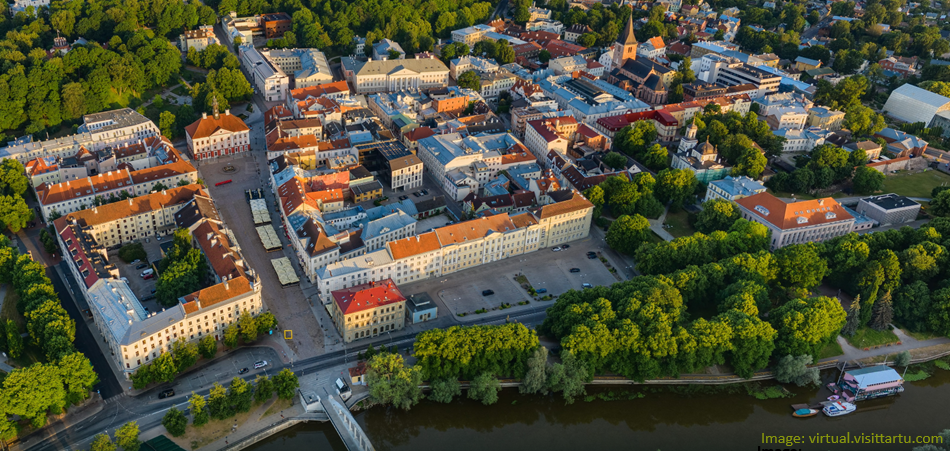Physicum
The venue of the conference will be the new building of the Institute of Physics, University of Tartu, inaugurated in 2014 and remaining one of the most modern physics buildings in Eastern Europe. Together with the technology, chemistry and biomedical institutes it is situated at the natural science campus, which is about 10 min by bus or 30 min walk from the historical center of Tartu (see the map).
Places for lunch
For the lunch break the closest cafeteria in one minute walking distance from Physicum is located in Chemicum (map) but unfortunately they will be on vacation from 1 July onwards. There is a small food kiosk in a 5 minute walking distance at the University Hospital (map) which serves hot dogs, burgers, buffee food, packed salads and sandwiches. The Coop supermarket is also in a 5 minute walking distance (map) where one can buy a selection of hot foods and salads to take away. A 15 minutes walk can also take you to a large Lõunakeskus shopping center with many different eating options (map). The popular food delivery apps Wolt and Bolt allow to order food from dozens of restaurants in Tartu. Provided there is sufficient interest we will make a group order at special price for lunch food delivery to Physicum.
Tartu
Tartu is the second largest city of Estonia and is often called the "intellectual capital" of the country. Around 20% of the population are students, which makes Tartu as well the student capital of Estonia. Most of them attend the University of Tartu, which was founded in 1632, and is now a leading research university, ranking among the top in the New Europe.
Information related to tourism and sightseeing in and around Tartu can be found at the Visit Tartu and Visit Estonia portals, while many cultural events are listed at the Window of Culture pages. One can also enjoy a virtual tour of the city.
Science in Tartu
There is a long history of science and physics in Tartu. It was perhaps the first place in the world where Newton’s Principia was taught in a university course, just a few years after the publication of the seminal book. In the early 19th century, astronomer Friedrich Georg Wilhelm von Struve pioneered to measure accurately the distance to the nearby stars, working with the most powerful telescope of the time at Tartu Observatory. His contemporary Johann Christian Martin Bartels introduced the notion of local frames and torsion to differential geometry. In the beginning of the 20th century Ernst Öpik estimated the distance of the Andromeda Galaxy, thus paving the way for modern cosmology. Later Jaan Einasto was one of the first to realise the need for dark matter.

